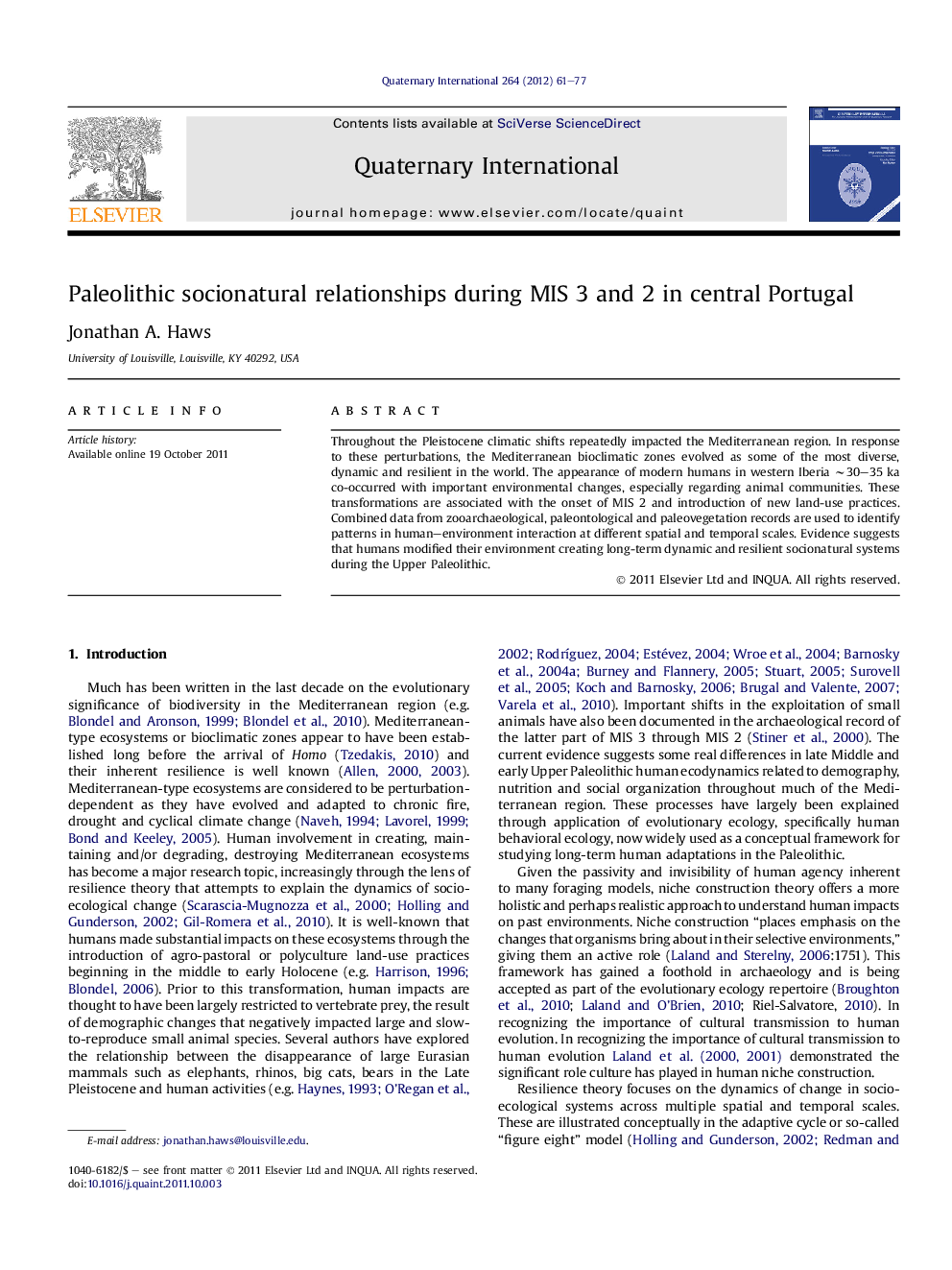| Article ID | Journal | Published Year | Pages | File Type |
|---|---|---|---|---|
| 1042765 | Quaternary International | 2012 | 17 Pages |
Throughout the Pleistocene climatic shifts repeatedly impacted the Mediterranean region. In response to these perturbations, the Mediterranean bioclimatic zones evolved as some of the most diverse, dynamic and resilient in the world. The appearance of modern humans in western Iberia ∼30–35 ka co-occurred with important environmental changes, especially regarding animal communities. These transformations are associated with the onset of MIS 2 and introduction of new land-use practices. Combined data from zooarchaeological, paleontological and paleovegetation records are used to identify patterns in human–environment interaction at different spatial and temporal scales. Evidence suggests that humans modified their environment creating long-term dynamic and resilient socionatural systems during the Upper Paleolithic.
